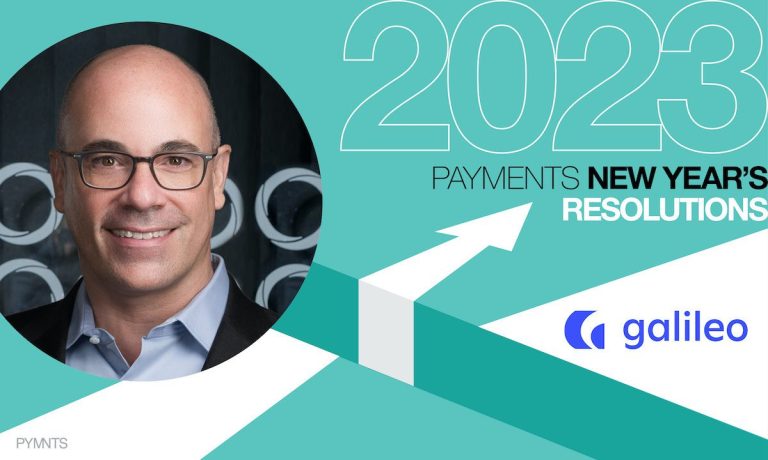
Real-time payments can transform banks that embrace it, says Mike Haney, head of digital core at Galileo Financial Technologies sister firm Technisys, in the new PYMNTS eBook, “2023 Payments New Year’s Resolutions.”
Banks occupy a unique position in the payments universe. Transactions often begin and end with a bank account. As mechanisms to move money between those accounts are increasingly becoming real-time, banks must foster a mindset of continuous adaptability to deal with this ever-changing landscape.
Consider The Clearing House’s RTP service which began in 2017. Its capabilities already reach 61% of all demand draft accounts in the United States. P2P networks like Venmo and Zelle recently began clearing and settling some transactions over the RTP network. The Federal Reserve’s FedNow service also launches this year. It is expected to reach 100% of financial institutions in the U.S. According to Global Data, instant payments global growth has a projected 23.6% CAGR through 2025, and FedNow adoption is expected to follow suit.
2023 provides opportunities for banks to embrace transformations in the payments industry, thereby reducing operational costs, increasing customer loyalty and deepening relationships with partners. This year, banks should resolve to:
1. Adopt real-time operations: Banks must adapt their client servicing models, including dispute management processes, migrate liquidity management to a 24/7 operation and update fraud process. By changing fraud prevention, detection and recovery procedures to accommodate clearing and settlement, which will occur immediately and irrevocably, banks can better protect against the always-available nature of instant payments, which gives fraudsters more opportunities to attack.
2. Eliminate architectural complexity: Although there have been delays in deploying ISO20022 for legacy payment networks, including SWIFT, CHIPS and Fedwire, newer schemes such as RTP and FedNow have adopted this global standard from the start. Banks can leverage this opportunity for system consolidation centered around this standard and a chance to gain experience using ISO20022. While modernizing payment engines and gateways are important, an additional consideration is to transform core banking systems to eliminate legacy practices such as memo posting.
3. Replace fee income: Instant A2A payments threaten the interchange fees banks have come to enjoy from their card businesses. This, coupled with the declining revenue from non-sufficient funds handling, such as overdraft fees, means two of the largest sources of fee income are at risk. Banks should find alternative ways to charge for their services to compensate for lost revenue.
4. Reduce credit card dependency: While 84% of adults in the U.S. have at least one credit card, instant payment schemes such as pay-by-bank have shown to be successful overseas and are rapidly coming to the U.S., threatening credit card usage. Large banks like JPMorgan Chase have already challenged themselves to determine how to mitigate a potential slow-down in their card business. This could include leveraging existing trends, such as the rise in popularity of debit cards among the younger generations and combine it with buy now, pay later (BNPL) financing.
5. Be present at point-of-need: BNPL and early wage access are two examples of how embedded finance and instant payments are coming together to solve real customer problems. Banks can increase merchant services and business banking solutions to take advantage of instant payments by being available when the customer needs it most. For example, Galileo recently launched its bank-issued buy now, pay later solution designed to enable more purchase options for customers and to keep underwriting decisions with the bank who understands the customer’s financial history best.
The path to instant payments may be complex. However, the banks that embrace it will reap the rewards of a simpler, more standardized offering and be better positioned for the next industry evolution.